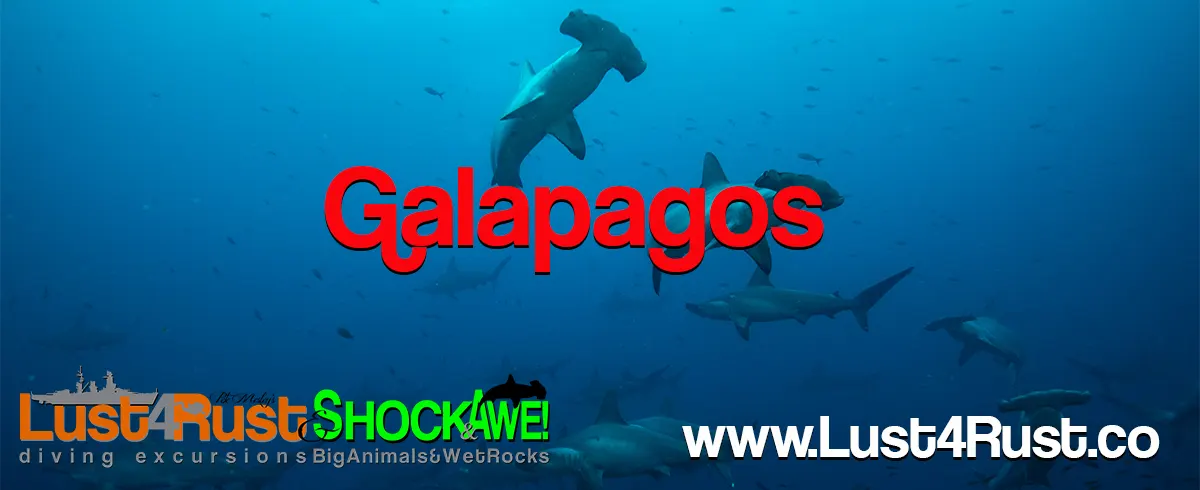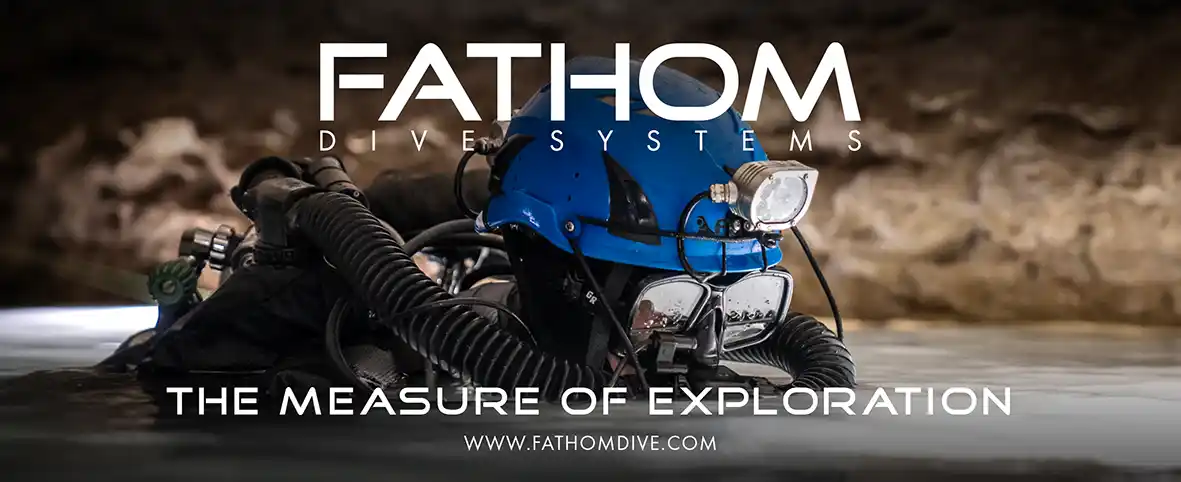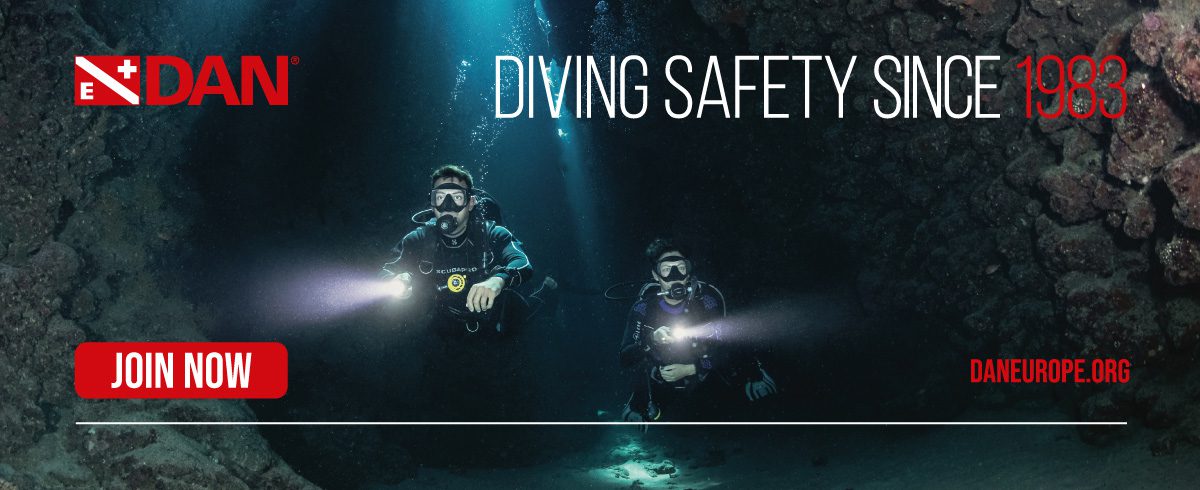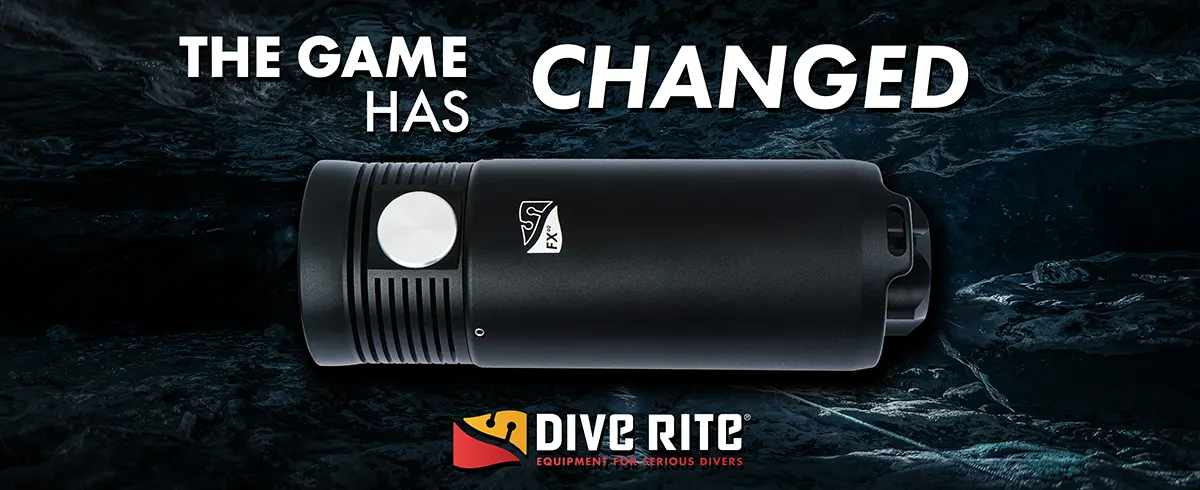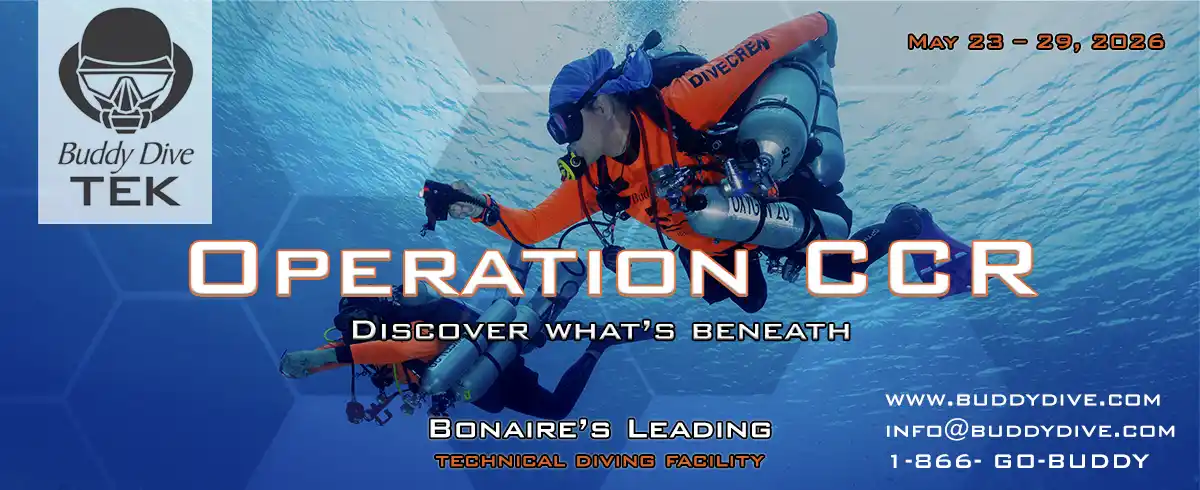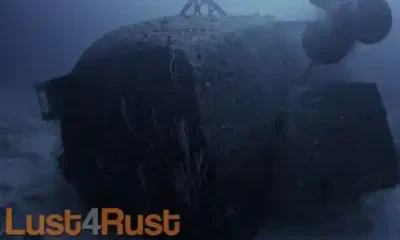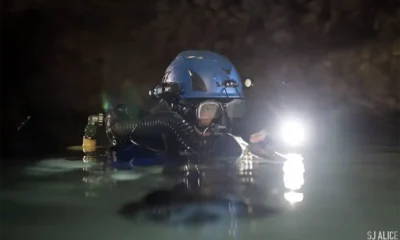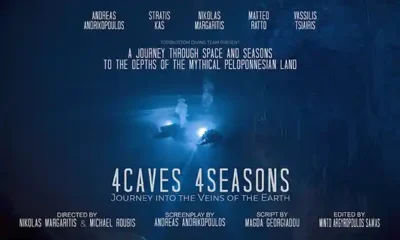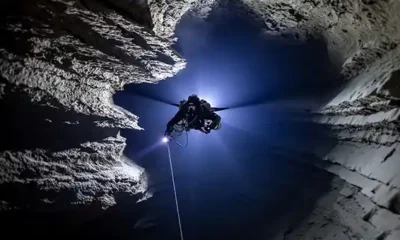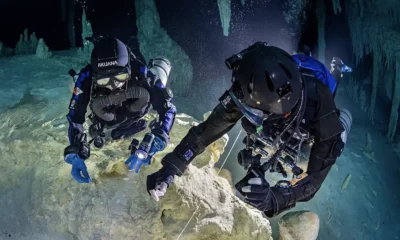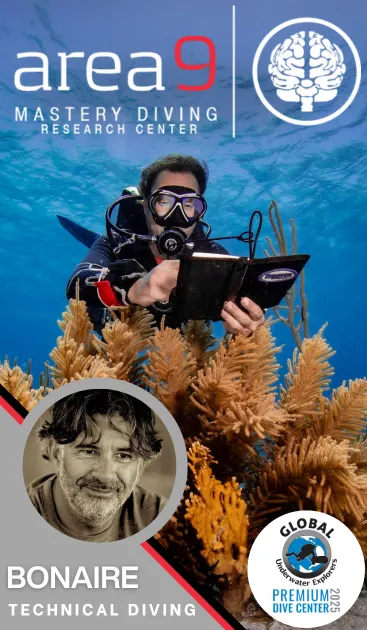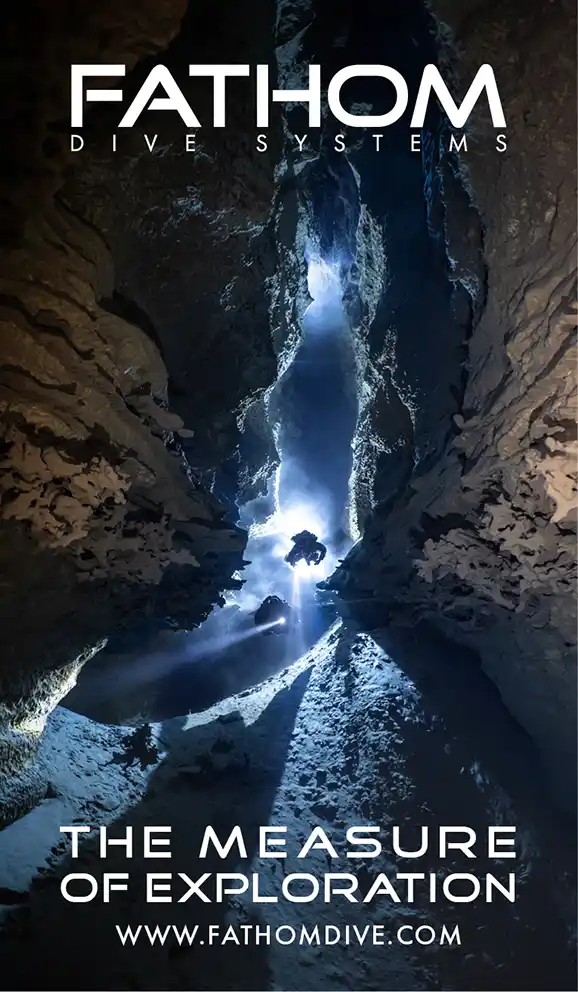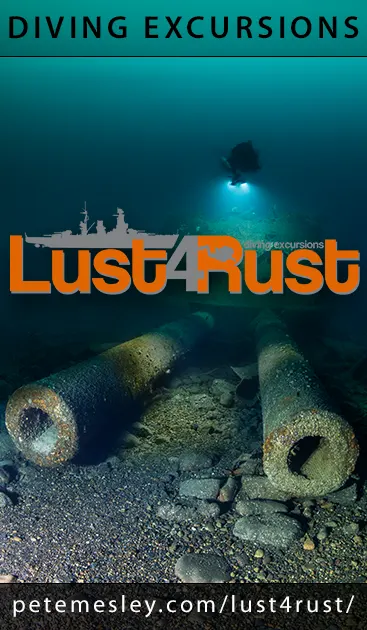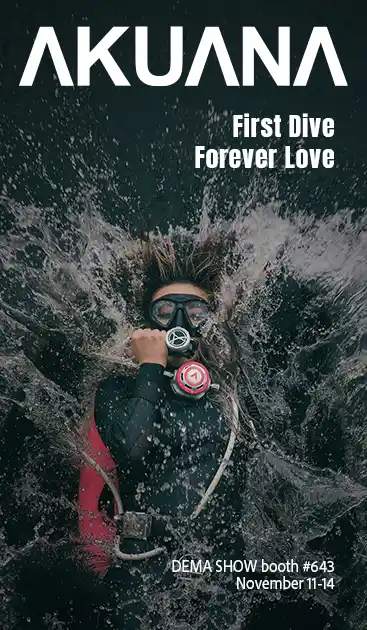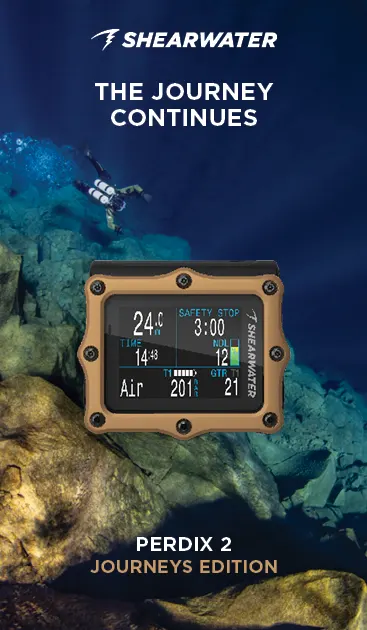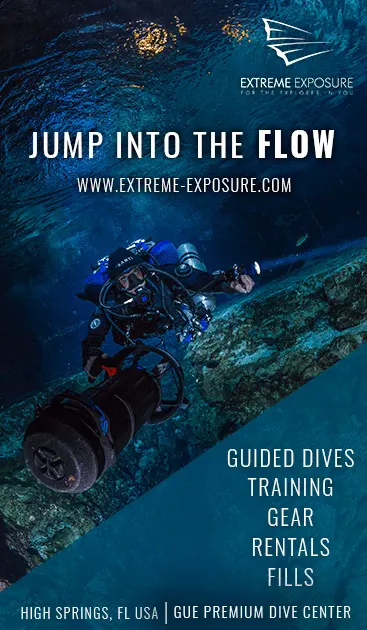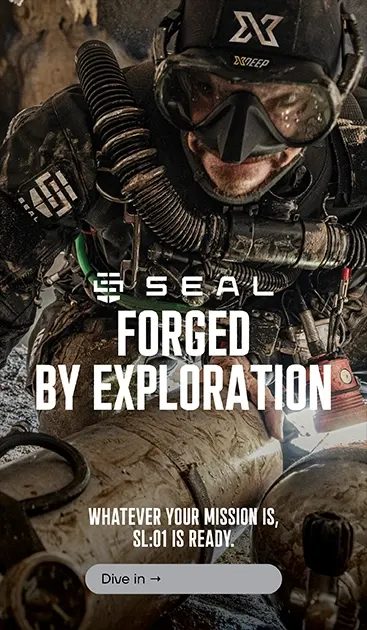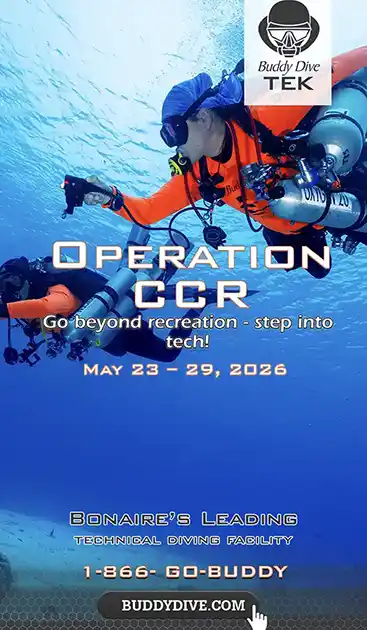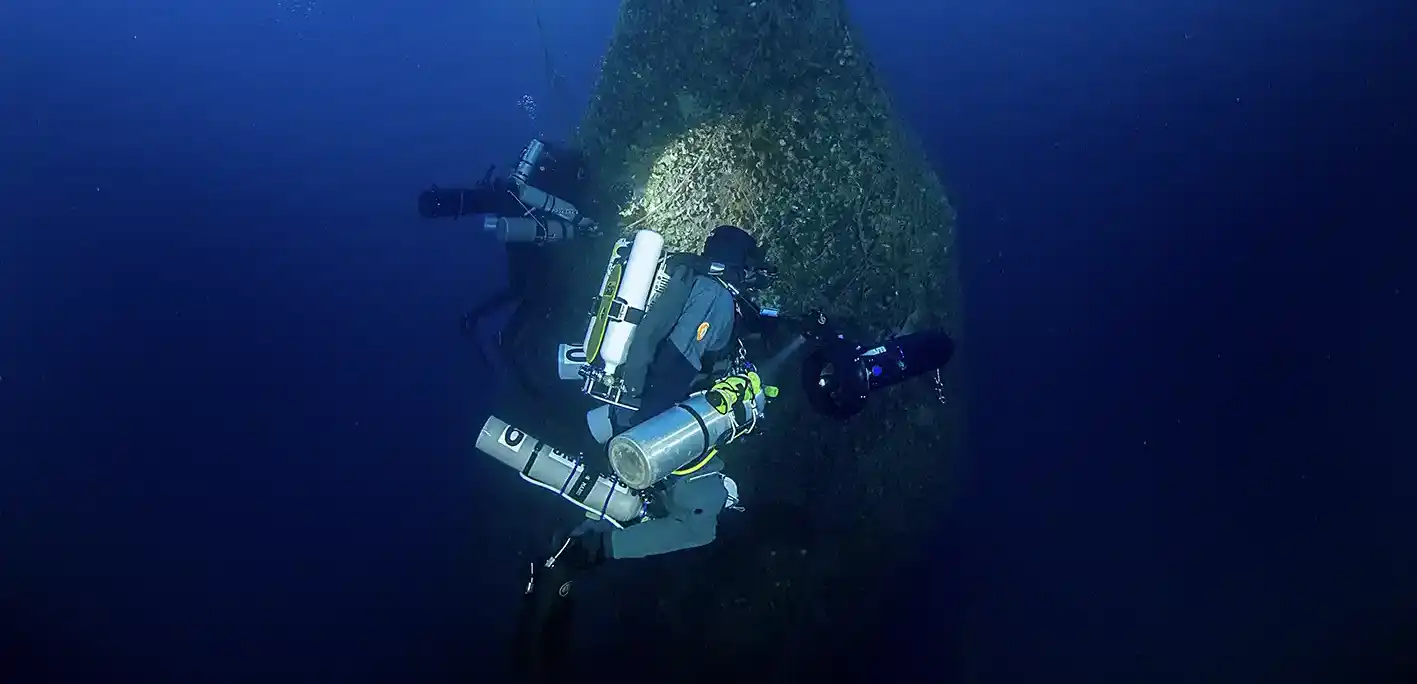

Latest Features
Back to U455: The eye never forgets what the heart has seen
Through thousands of images and six days of computation, a lost submarine reappears. But in Dario Lupi’s haunting reconstruction, what emerges is not just a model — it’s the human story left behind.
by Dario Lupi
Lead image: The prow of the U-455. Photo by the author
Almost twenty years after its discovery, dive centers in the Genoa, Italy, area are now offering expeditions on the U455 wreck. It’s definitely a deep dive; at over 110 m/360 ft below the surface, it is only scheduled during the most optimal sea conditions. Even then, divers are selected carefully. Of the many eager divers who would like the opportunity to visit the wreck, many see the U455 as the culmination of their training after multiple advanced mixed gas technical courses.
Why the U455?
Diving on the wreck of this submarine is often perceived as a personal Everest: a test of technical ability that can steal the spotlight from the historical importance of the site and the tragedy that occurred there.
Speaking with people who had dived there, I collected impressions that were sometimes a bit disarming. When I asked divers what it was like, they said things like, “Well, nothing special,” “It’s a bit bare,” and “You see it all and it’s over.” I had the uncomfortable feeling that, sometimes, in the banality of our quiet lives, we may completely lose our understanding of the significance of this wreck. This was the site of an immense tragedy—one that represents much of the larger historical drama that was the Second World War.
My Project
I pondered these ideas. In my view, this dive has turned into a one-dimensional challenge where the weight of the sub’s history has been almost forgotten. Losing this sense of humanity is a shame. I felt that the story of this sub had to be retold—but in a way that turned overlooked context into something physical—something that said, “You see? There it is. A place where young men lost their lives. This is not a bedtime story; this was real.”
There were photos of the U455, but nobody had yet to complete a photogrammetric scan of the wreck. With such a scan, you could digitally remove all of the water, rendering the model totally visible. This perspective, at times, can be more powerful and evocative than a single shot, where the photographer can frame only a small part of a large subject. A scan would show the wreck in its entirety.
“This was the concept for this work: A photogrammetric scan of the U455 to recall the memory of her losses.”

This is how my obsession with the wreck of U455 began—it stemmed from my desire to reset the dominant idea that the U455 is simply a diver’s Everest.
I have to confess that I felt a measure of arrogance in committing to this project. Because, in some ways, it was arrogant to believe that the story I was trying to retell and the model that I was going to build would be sufficient to make people see this submarine with new eyes. If that isn’t arrogance, I don’t know what is.
Making a photogrammetric scan of the site would help people to look at it clearly and distinctly—or, for those few who had already been there, to look at it again. It would also allow those who had neither the desire nor the ability to try this type of technical immersion to see the sub for the first time. But this was not enough. If all we see in a model is objects, it is useless. We also need to see the story, otherwise what we see has no substance and will be forgotten. When the brain knows what it’s looking at, the eyes can truly see.
Lost at Sea
U455 sent its last message on April 2, 1944—on its tenth mission. The sub was sailing from Algiers to La Spezia. On April 4, in the absence of other communications, it was understood that something unexpected must have happened.
On April 6, the ships of Flotilla 22 went out to sea in search of the missing vessel or, at worst, to identify floating wreckage or the presence of oil or fuel slicks that would indicate its final resting place. All searches were fruitless. The vessel and its entire crew were officially declared lost and, from then on, a veil of mystery fell over the final fate of this Kriegsmarine submarine.

Fast forward to August 2005 when Lorenzo del Veneziano announced the discovery of a U-boat off Punta Chiappa, near the promontory of Portofino. The wreck was recognized as a type VIIC U-boat, and the only one missing in the Mediterranean was the U455—it was, at long last, found.
During the war, searches were conducted in the vicinity of La Spezia, but the wreck was eventually found several nautical miles farther north. How it ended up there is a mystery within a mystery; were they off course?
“Were they on a covert mission? We don’t know, and we probably never will.”
The fact is that, among the fishermen of the Camogli area, there had been rumors for years about the wreck of a submarine. One old coral gatherer, a “Corallaro,” apparently reported having seen a submarine somewhere, but no one had been able to verify his claim. Lorenzo del Veneziano, however, did not give up. He followed the faint trail of that old diver’s story and finally managed to find the fabled submarine.
The wreck was found resting on the seabed at a depth of over 110 m/361 ft, lying with over half of the hull tilted at 45 degrees upwards and with the wreckage of the stern lying on the bottom. There seems to be no doubt about the cause of the sinking: It was an explosion, although what triggered it is not clear. Some kind of explosive device had torn the midship in the direction of the stern. A bomb, a mine, the malfunction of a torpedo on board? Certainly, the crew had had no chance to escape.
Diving on the U455
Visualize, for a moment, a descent on the U455. The line leading to the wreck—supported by a float several tens of meters overhead—is firmly anchored just above the submarine’s cutwater. As you descend along the line, the bow of the vessel emerges from the blue like the blade of a table knife: sharp, but rounded. The top of the hull sits at a depth of about 87 m/285 ft.From here, you can observe the “unnatural” position of the wreck. The hull rises, angled 45 degrees from the bottom. But, from the cutwater, it is impossible to see the sand that is almost 30 meters deeper— at 116 m/381 ft—because the water is so dark and murky. With her hull pointing upwards, the submarine appears to be trying desperately to escape the depths that have seized her.

Starting from the cutwater, you can slide down to the “sail“. Here, it’s impossible to miss how the hull is completely encrusted by concretions and colonized by clams; other marine inhabitants have made this their home, leaving very few parts of the original metal visible.

Eighty years in the water is a long time! Just below the bow, the depth rudders remain in a horizontal position, in navigation trim. The anchor remains some distance above the starboard rudder. Further down, you can see the conning tower, the “sail”, at about 105 m/344 ft. On the sail, among the concretions, the lens of the auxiliary periscope is clearly visible. The first time I saw it, I was struck by how small the sail was. Two men would have had to cram themselves in to stand on the conning tower. The access hatch is open, with a diameter of only 60 cm/26.6 in.

It is so small that a man would have had to crawl to get in or out, which reminds us just how cramped the living conditions were for over fifty men in such a perilous time.

Some specialists’ analyses show that, at the time of the sinking, the submarine was probably traveling at periscope depth—just a few meters below the surface of the water. As for the cause of the sinking, one possibility is that the U455 ran into a mine placed by the same Axis forces. There is no irony in this story, but given the state of confusion the Axis commands—and other forces—dealt with in 1944, this would not have been the first time a hull was sunk by “friendly” mines.
A consideration
A collision with a “friendly” mine likely sealed the fate of the 51 men aboard the U455. The captain, Hans-Martin Scheibe, was only 26 years old. Will Arp, 31, was the oldest crew member, and Wissner Horst, 18, was the youngest. I feel great sadness for the senseless, horrific deaths of these young men, initiated by a cause considered normal in times of war. I find it difficult to accept the virulent ideologies at the root of that war.

Back to the dive
From the sail—the conning tower—you can slide farther down and observe the two anti-aircraft mounts which help identify this U-boat as a type VIIC from the final stages of the war. From this point, you’d be close to the very bottom.
Here, you realise that the structure you have just traveled along is only a little more than half of the submarine; the other half is lying on the seabed. For accuracy’s sake, I should say that the other half is “scattered on the seabed,” but the wreckage still has a continuity; from behind the tower, you can follow the wreckage and reach the cone of the stern that protrudes from the bottom. The stern cone contained the rear buoyancy tanks, and it is possible that it settled in such a way due to the residual air inside them. What is certain is that the stern, which had contained the engine room, is no longer there. The bow, however, in order to remain in that position straight toward the surface, had to contain air. Those who survived the explosion probably died by asphyxiation, perhaps made a little more merciful by falling into an almost drunken state as the vessel descended to greater and greater depths on its over-110 m/361 ft descent.

This is the mix of sensations that the diver brings back to the surface from a dive on this site: dismay at the destruction and the fate of men combined with wonder at how the sea, indifferent to our misfortunes, regenerates itself, repairing wounds and covering everything with life.
The model
In order to realize the model, I have had to overcome some difficulties. I needed to take shots of all parts of the wreckage and, of course, in order to do so, I needed to see them. This was not something that could be taken for granted. The upper part of the wreck—at a depth of 87 m/285 ft at the cutwater—usually enjoys good visibility, but things get worse as you move downward. At the depth of the sail, about 100-110 m/330-370 ft, visibility is by no means guaranteed.
On the bottom, at 115 -116 m/377-381 ft, things are even more uncertain. The seabed there is muddy—a type of mud that disturbs easily and creates poor visibility in the wrong current. Just a flick of a fin is enough to create an almost impenetrable cloud of talcum-fine powder. In order to map the entire wreck, I had to be lucky. In fact, few divers say they have managed to see the stern cone. Some have reached the base of the wreck and stretched out the line of a reel and managed to find it, while others got lost in the attempt, having to ascend free from 120 m/394 ft—something to avoid, if possible. But, by happy contrast, there are a few days each year when the water is crystal clear, and it is possible to see the stern cone and get there directly by detaching from the wreck.

To get lucky, the numbers had to be on my side, so I had to “play” on the total amount of possible opportunities. For this reason, last year, I enlisted in all the planned dives on the U455 with all of the dive centers in the area—that’s how I managed to do three dives in the summer of 2024. Given the depth of the wreck and the almost total absence of ambient light, I chose to take the shots in continuous light, as this would have simplified the work to be done on the bottom a bit and reduced the cognitive load. Managing strobes, due to various factors, would have been a little more complex.
Nevertheless, careful planning was no match for poor weather conditions, changes in my own physical condition, and equipment failures. During the three dives in 2024, we dealt with poor visibility and operational errors, and I came away with limited results: approximately 60% of the model, which was of questionable quality, and we had the deepest sections yet to be dived. By the time I made my third dive, a lot of material was still missing.

2025 didn’t have a promising beginning: Two of my planned dives were cancelled. But, toward the end of June, things began to look up. We had good weather, no equipment issues, and I was in good shape. At long last, the planets had aligned, and it was time to go again!
Once underwater, I got a final gift from the sea: at the seafloor, I was able to distinctly discern the stern cone. With my camera set in time lapse, I scootered away from the hull and made two passages to capture the bottom debris scatter; I finished the seafloor scan in just a few minutes. Then, from there, I started spiraling back to the upper part of the wreck. Having already gotten tangled in the webs of lost nets hanging from the bottom of the hull during previous dives, I had to exercise maximum care to avoid it happening again. Everything went well and, after 35 minutes of bottom time, I departed from the wreck and began the long ascent to the surface.

Before this dive, I had been very anxious about the results of the scan. But, with the long deco over, I felt lighter—more hopeful. To add to my happiness, back on the boat, my buddy Enrico told me that, by a twist of fate, this precise day was the anniversary of the launch of the U455: June 21, 1941, exactly 84 years ago.
I returned home and started processing the images. By midnight, I had the first result: the model was finally complete. Approximately 2,600 images were needed to compose the cloud of 150 million points; from this, I extracted the model whose images accompany this article.

“Here, my story ends; now, if you have the chance to dive there, it’s your turn.”
U455 is the concrete testimony of a wicked era. It is the tomb of 51 young men: a war memorial. For these reasons, it deserves to be approached with the utmost respect—and to be remembered.
Some technical details:
- The model shown in this article is produced from 2,600 images.
- The dense cloud is composed by 150 million points.
- The model is made of 18 million polygons.
- Six days of computing time on an AMD 5859x processor PC where necessary.
Enjoyed this read? Here are more stories that tie into it.
DIVE DEEPER
InDEPTH: The Thetida Project and the Wreck of the Equa By Fabio Ruberti, 3D models by Dario Lupi (2025)
InDEPTH: SS Burdigala: An Elegant Mediterranean Wreck by Andrea Murdock Alpini (2024)
InDEPTH: For Whom the Bell Tolls—Wreckers and Mine Divers! by Lanny Vogel (2024)
Alert Diver (dan.org): Hazards in Wreck Diving by Richie Kohler (2021)

Dario Lupi is an Information Technology specialist and a diving enthusiast. He is an open and closed circuit diver certified for any depth with both systems. A passionate wreck diver, he recently devoted time to learning photogrammetry skills; he has performed photogrammetric surveys of Mediterranean Sea wrecks with the goal of documenting submerged artifacts. Most notably, he’s scanned the BR20 medium bomber of Marina degli Aregai, a sunken roman ship also in Marina, the wreck of the Naism freighter in Giannutri Island, the Genepesca trawler at the shoals of Vada, the Jorn Barge , UJ2207 and UJ2216 wrecks in Sestri Levante, and, finally, the Equa wreck in Rio Maggiore. In addition to diving, Dario enjoys writing about the underwater world.

